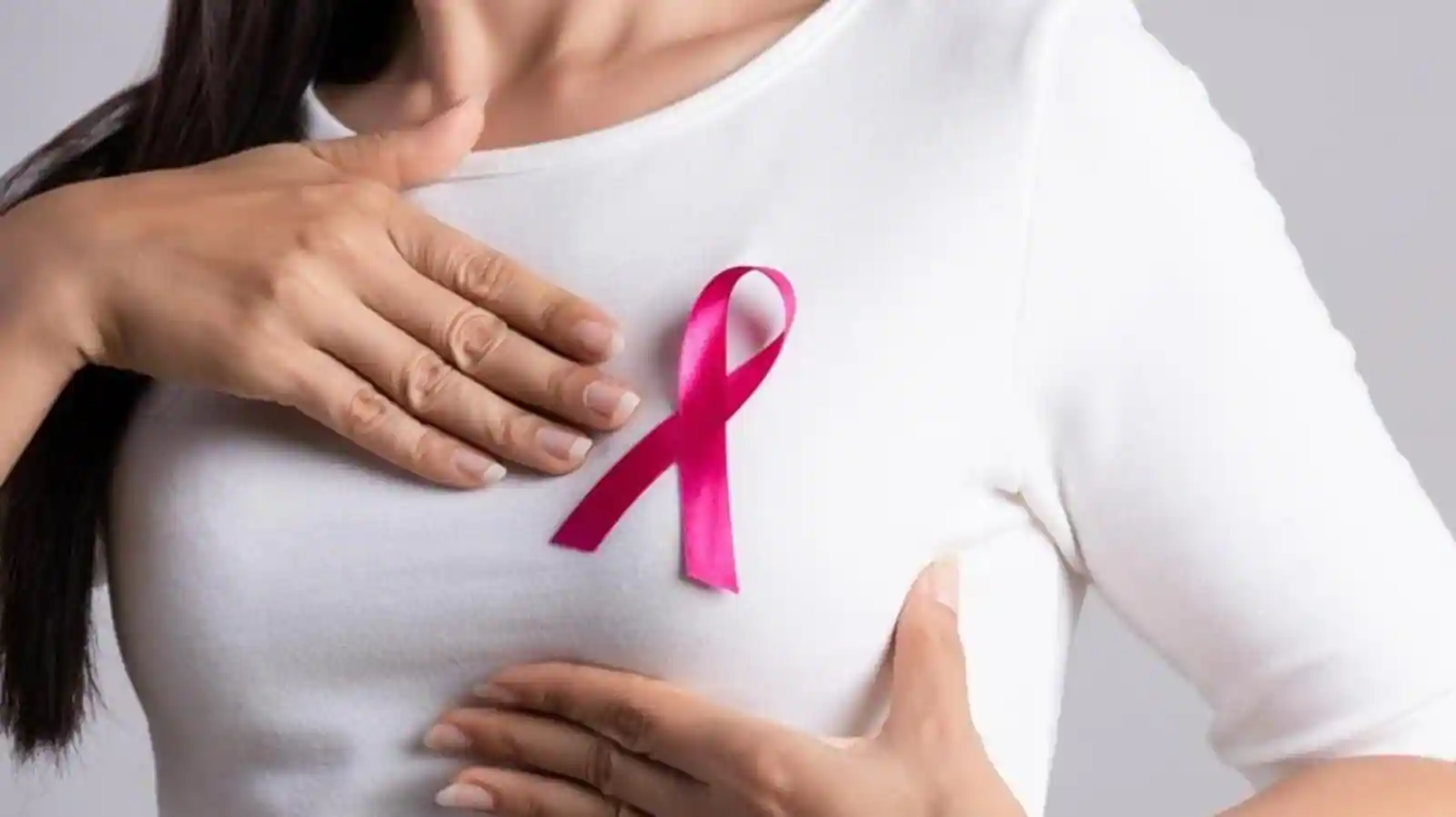Many factors contribute to changes in women’s bodies, including stress, hormones, diet, and lifestyle. Although some changes are normal and expected, others might be a sign of disease, such as Women’s Cancer.
According to the American Cancer Society (ACS), “some of the cancers that most often affect women are breast, colorectal, endometrial, lung, cervical, skin, and ovarian cancers.”
While not every change in a woman’s body is a sign of cancer, here are common signs you shouldn’t ignore.
1. A lump or hard tissue in the breast
The most common signs of breast cancer include a lump in the breast—for ductal carcinoma—and tissue in the breast that gets thicker or harder—for lobular carcinoma—according to the Canadian Cancer Society (CCS). The hard lump will feel “very different from the rest of the breast.
It may feel like it is attached to the skin or the surrounding breast tissue.” It may feel tender but not painful. And it doesn’t get smaller or show up and disappear with the menstrual cycle.
2. Other changes to the breast and surrounding areas
Other signs of ductal and lobular carcinomas, according to the Cancer Treatment Centers of America (CTCA), including changes in the size and shape of the breast and changes to the nipple, such as a nipple suddenly becoming inverted—pointing inwards. Discharge from the nipple with or without blood is another symptom, as is a lump in the armpit.
3. Changes in breast skin colour
Inflammatory breast cancer is a rare type of breast cancer that changes the colour of the skin to “purple or red” on “more than one-third of the breast,” according to the ACS.
Other symptoms of this breast cancer include those of ductal and lobular carcinomas, along with breast swelling; dimpled or pitted skin (like that of an orange peel); itching or burning; tenderness or pain; the breast feeling warm to the touch; and a lump near the armpit or collarbone.
4. Changes in bowel habits
Colorectal cancer can cause changes to bowel habits that last more than a few days, such as constipation, diarrhea, or stool consistency, according to the Roswell Park Comprehensive Cancer Center.
Other changes may include feeling like you need to have a bowel movement even after having one. And symptoms may also include weight loss and cramping or abdominal pain.
5. Blood in the stool
Since colorectal cancers “often bleed into the digestive tract,” another sign of this cancer is blood in the stool, according to the ACS. “Sometimes the blood can be seen in the stool or make it look darker.”
And over time, this blood loss can lead to anemia—a low red blood cell count—which often causes weakness and fatigue.
Also Read: How to Treat Your Skin Issues Using Garlic
6. Abnormal vaginal bleeding
Unusual vaginal bleeding is common in all gynecologic cancers—cervical, ovarian, uterine, and vaginal—except for vulvar cancer, according to the Centers for Disease Control and Prevention (CDC).
Abnormal bleeding includes any bleeding after menopause, bleeding between periods, and periods that are heavier or last longer than usual.
7. Changes in vulva skin or colour
Unlike the other gynecologic cancers, vulvar cancer is the only type to have symptoms that include “itching, burning, pain, or tenderness of the vulva,” according to the CDC, along with “changes in vulva color or skin, such as a rash, sores, or warts.”
8. Abdominal, back, or pelvic pain
Signs of ovarian cancer include abdominal bloating, lower back pain, and changes in appetite, such as a loss of appetite or feeling full sooner, according to the CTCA.
Pelvic pain or pressure is a common symptom of both ovarian and uterine (which includes endometrial) cancers. Constipation and an urgent or more frequent need to urinate are symptoms of both ovarian and vaginal cancers.
9. Pain during sexual intercourse
Along with abnormal vaginal bleeding and discharge, pain during sexual intercourse is another symptom of vaginal cancer, according to the American Society of Clinical Oncology (ASCO).
Other symptoms include difficulty or pain when urinating, pelvic pain, back or leg pain, swelling in the legs, and abnormal bowel function.
Also Read: The Health Benefits of Magnesium: Dental Health & Nutrition
10. Nervous system changes
If lung cancer spreads to the brain, it can cause headaches, dizziness, seizures, and a weak or numb arm or leg. Some lung cancers can also affect nerves to the eyes, causing droopy upper eyelids, a smaller pupil, and little or no sweating on one side of the face.
Other nervous system problems include muscle weakness that causes difficulty speaking, swallowing, or getting up from a sitting position.
11. Swelling in the face, neck, and arms
Tumors in the upper part of the right lung and lymph nodes inside the chest can press on the superior vena cava (SVC), “a large vein that carries blood from the head and arms down to the heart.”
This pressure can cause blood to back up in the veins and cause “swelling in the face, neck, arms, and upper chest (sometimes with bluish-red skin color),” according to the ACS.
12. Persistent coughing
According to the CTCA, “a new cough that is persistent or worsens” is a common symptom of lung cancer. Other common symptoms include hoarseness, wheezing, and chest pain that worsens with coughing, laughing, or deep breathing; coughing up blood or rust-colored saliva; and persistent or recurring lung infections, such as bronchitis or pneumonia.
13. Lesions, sores, or pearly bumps on the skin
Basal cell carcinoma is a type of skin cancer that most often occurs as a result of “DNA damage from exposure to ultraviolet (UV) radiation from the sun or indoor tanning” according to the Skin Cancer Foundation.
It may appear as a pearly or waxy bump; a lesion that is flat and flesh-colored; a lesion that is brown and scar-like; or, a sore that bleeds, scabs, heals, and returns.
14. Firm, red bumps on the skin
Squamous cell carcinoma also occurs on sun-exposed areas of your body, such as your face, ears, and hands. According to WebMD, this type of skin cancer may appear as “a dome-shaped bump or a red, scaly patch of skin” that is “usually rough and crusty, and can bleed easily when scraped.”
15. A mole that changes size and colour
Melanoma “can occur on skin that hasn’t been exposed to the sun,” according to the Mayo Clinic. It can also occur “in an existing mole that becomes cancerous.” This type of skin cancer often develops on the lower legs in women.
Common signs of melanoma include a mole that bleeds or changes in size, colour, or texture; a lesion that burns, itches, and is painful; or, a large brown spot with dark speckles.
Other signs include a small lesion with an irregular border and white, red, pink, blue, or blue-black portions; and “dark lesions on your palm, soles, fingertips or toes, or on mucous membranes lining your mouth, nose, vagina, or anus.”
16. Blood in urine
Blood in one’s urine is a sign of bladder cancer. According to the Mayo Clinic, blood in urine “may cause urine to appear bright red or cola colored, though sometimes the urine appears normal and blood is detected on a lab test.” Other symptoms of bladder cancer include back pain and frequent and painful urination.
17. Persistent fatigue
Though persistent fatigue “without any other symptoms is uncommon in many cancers, for people with leukemias and lymphomas fatigue may very well be the first symptom,” according to Lisa Fayed in her article for Verywell Health.
Fatigue is often a sign of cancers that cause anemia by interfering with the production of red blood cells, like with leukemia and lymphoma, or contributing to the loss of red blood cells, such as with stomach and colorectal cancers.
18. Difficulty swallowing
Trouble swallowing is a common sign of head and neck cancers, such as throat cancer. According to the National Cancer Institute, head and neck cancers include the mouth, jaw, pharynx (throat), larynx (voice box), sinuses, nasal cavity, and salivary glands.
Signs of these cancers also include a persistent sore throat; a lump or sore that doesn’t heal; and a change in voice, such as hoarseness.
19. Night sweats, fever, and unexplained weight loss
According to Melissa Conrad Stöppler, MD, in her article for eMedicineHealth, night sweats can be “an early symptom of some cancers.”
Lymphoma is the most common type of cancer that has night sweats as a symptom. However, “leukemia may also cause night sweats,” says Stöppler.
And along with night sweats, those with “undiagnosed cancer frequently have other symptoms as well, such as unexplained weight loss and fevers.”
20. Declining overall health
When cancer grows and spreads to other parts of the body, including the organs, various symptoms can arise that are a sign of declining health.
For instance, advanced breast cancer can manifest with “bone pain, weight loss, nausea, loss of appetite, jaundice, shortness of breath, cough, headache, double vision, (and) muscle weakness,” according to the CCS.
It’s important to note that if any new health symptoms arise and last for more than two weeks, you should talk to your doctor.
20 Signs Women Cancer
You May Also Like:-
Health Benefits of Blue Berries











